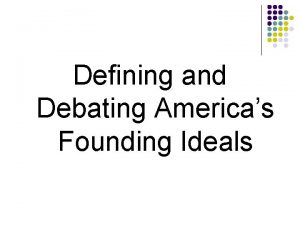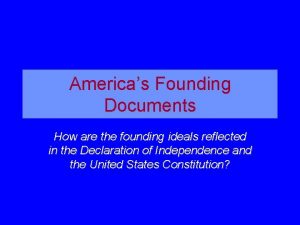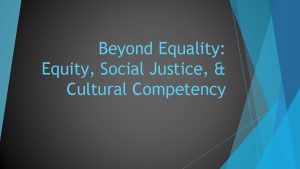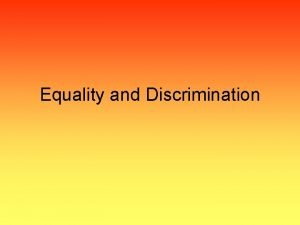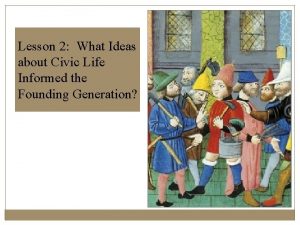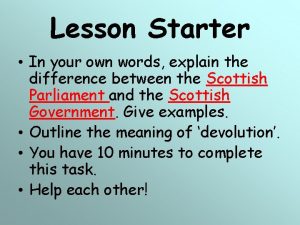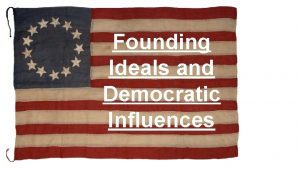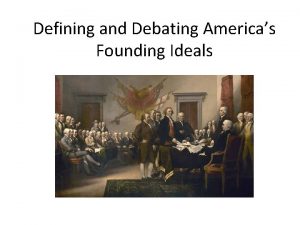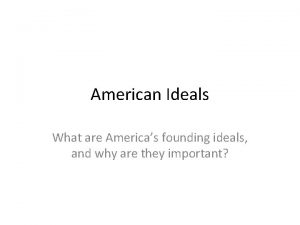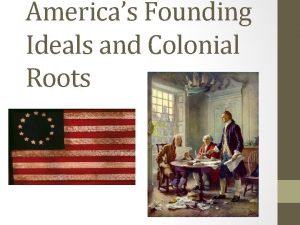Defining Americas Founding Ideals Equality vs Justice Equality













- Slides: 13

Defining America’s Founding Ideals

Equality vs Justice Equality Justice • The condition of everyone having the same rights and opportunities. • The concept of “Fair” distribution of benefits (+) and burdens (-) in society.

Individual Rights • Basic conditions that are allowed or owed to each person in a society • Protected by the government • “Freedom of…”

Liberty • The FREEDOM to think or act without being limited by unnecessary force.

Opportunity • The concept that people should have the CHANCE to attain their hopes and dreams.

Democracy • A form of Government that places the power to rule in the hands of the people • Voting

Options for Creating a New Government

Democracy • people have equal say in the government. • power to rule is in the hands of the people. • Direct / Representative

Republic • Representatives are elected by the people to make laws and run the government.

State Government • Power to rule & make laws is held locally, within an individual state.

National/Central Government • Govt. has the power to make laws for the whole country. • Example: Federal Govt. Washington D. C.

Federalism • Power to govern is divided between a central and state governments. • Central govt. ’s laws are supreme

Confederation • Union between independent states, where they cooperate with each other • Power to rule remains in each individual state.
 Discovering american ideals in primary sources
Discovering american ideals in primary sources Colonial roots of the founding ideals answers
Colonial roots of the founding ideals answers America's founding ideals
America's founding ideals Relative clauses defining and non defining
Relative clauses defining and non defining Defining and non defining
Defining and non defining Oraciones defining y non defining
Oraciones defining y non defining Defining and non defining relative clauses in telugu
Defining and non defining relative clauses in telugu Defining relative clauses examples
Defining relative clauses examples Non-defining relative clauses cümleleri
Non-defining relative clauses cümleleri Equality equity justice fence
Equality equity justice fence Formal equality vs substantive equality
Formal equality vs substantive equality Substantive equality vs formal equality
Substantive equality vs formal equality What philosophical ideas informed the founding generation?
What philosophical ideas informed the founding generation? Founding principles of the scottish parliament
Founding principles of the scottish parliament
